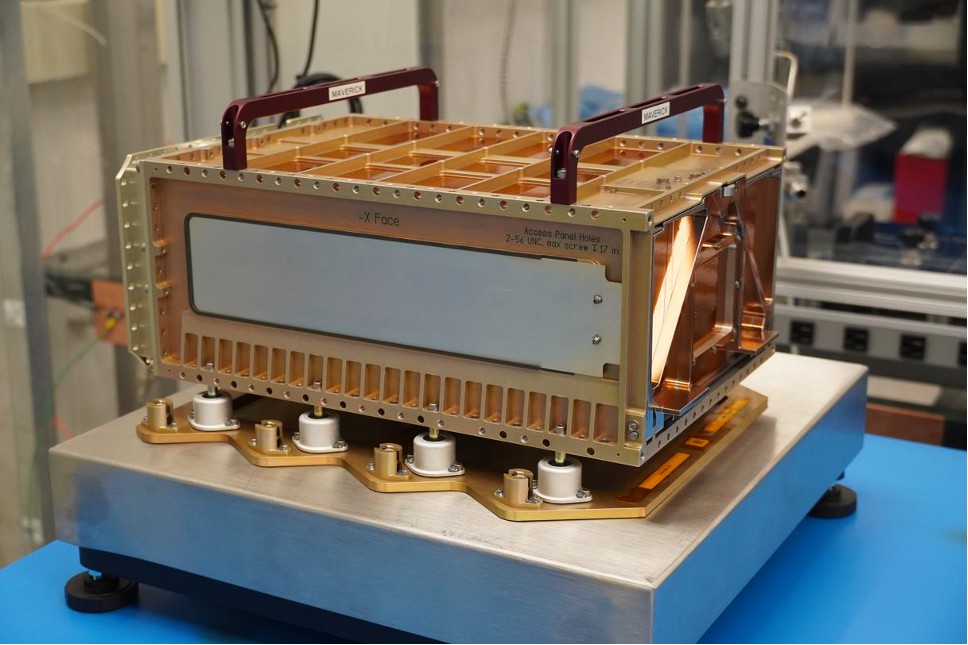Small Spacecraft Activities Around the Agency Archive
Highlights for December 2022
NASA’s Ames Research Center
BioSentinel, a 6U CubeSat that is one of ten CubeSats launched aboard Artemis I, has carried a biology experiment farther from Earth than any have ever traveled. BioSentinel completed a successful lunar flyby and is operating as expected. Currently in its heliocentric orbit, BioSentinel will perform the first long-duration biology experiment in deep space. With the commissioning phase of the mission nearly complete, BioSentinel’s first experiment is expected to begin in December and will continue experiments over the next five to six months. BioSentinel’s science results will fill critical gaps in knowledge about the health risks in deep space posed by space radiation.
NASA’s Glenn Research Center
The Long-Lived In-Situ Solar System Explorer (LLISSE) platform and its variants are a foundation for future Venus mission concepts based on a core set of long-lived, high temperature, technologies providing significant new science as well as demonstrating new technical capabilities. In December 2022, the project plans to initiate critical CO2 battery testing, and continue bipolar junction transistor (BJT) circuitry development, demonstrating operability in the Venusian environment.
NASA’s Goddard Space Flight Center / Wallops Flight Facility
NASA’s Goddard Space Flight Center’s petitSat, a 6U CubeSat mission led by Principal Investigator Dr. Jefferey Klenzing, was delivered to the International Space Station (ISS) on November 26, 2022 via SpaceX-26. petitSat is a heliophysics mission with a primary goal to study the link between Medium-Scale Traveling Ionosphere Disturbances (MSTIDS), also referred to as electrobouyancy waves, and plasma enhancements and to determine conditions under which MSTIDS generate large plasma enhancements, which can interfere with radio waves used for communication and navigation. petitSat is scheduled to be deployed from the ISS on December 26, 2022 and will be followed by a month of commissioning and six months of science operations.
NASA’s Jet Propulsion Laboratory
The Lunar Flashlight mission passed all its required reviews, including the Range Safety Review, and is ready for its launch on a SpaceX Falcon 9 rocket from Cape Canaveral Space Force Station. For more information, please visit: https://www.gtri.gatech.edu/newsroom/lunar‑flashlight
NASA’s Jet Propulsion Laboratory provided the integrated avionics and payload module for the Near-Earth Asteroid Scout (NEAScout) mission that recently launched on Artemis-1. This included a hi-resolution camera, Sphinx flight computer, F-prime flight software, electrical power subsystem, Iris radio, solar arrays with integrated medium gain antenna, and mission design and navigation (unique low-thrust tools) with Deep Space Network coverage support.
The Polar Radiant Energy in the Far-InfraRed Experiment (PREFIRE) CubeSat #1 is undergoing assembly, integration, and test (AI&T) at Blue Canyon Technologies (BCT). The flight instrument #2 has been integrated into CubeSat #2 at BCT and will start AI&T shortly.
The Lunar Trailblazer (LTB) project passed NASA’s continuation/termination review. Its instruments are slated to be delivered in December and flight system thermal vacuum testing will begin in April 2023.
The Sun Radio Interferometer Space Experiment (SunRISE) project continues to resolve the three propulsion issues preventing the start of the final assembly of the propulsion systems. All six JPL-built science payloads, which will receive and record global navigation satellite system (GNSS) signals from Earth and decametric-hectometric (DH) signals from the Sun, are delivered to Space Dynamics Laboratory (SDL) and being integrated with Space Vehicles.
NASA’s Artemis I Mega Rocket Launches Orion to Moon along with 10 secondary CubeSat science investigations and technology demonstrations, six of which use the Iris radio. The Iris deep-space radio for CubeSat missions, is a JPL-designed miniaturized software-defined telecommunications subsystem designed specifically for orbits beyond low-Earth orbit, such as medium-Earth orbit, geostationary equatorial orbit, Lunar, and interplanetary missions. It uses Deep Space Network compatible protocols.
NASA’s Johnson Space Center
Over the last eight months, NASA’s Johnson Space Center (JSC) has completed fabrication, assembly, and integration of R5 Spacecraft 4 (R5-S4) that is slated to launch as part of NASA’s Educational Launch of Nanosatellites (ELaNa) 43 mission. Within that time, JSC fabricated, assembled, and integrated another R5 spacecraft for the same launch. Similar to R5-S4, this second spacecraft, called R5 Spacecraft 2 (R5-S2), is intended to push the boundaries of how quickly a spacecraft can go from conception to launch vehicle integration. Both spacecraft are currently undergoing final flight software updates and integrated testing. The R5 series of spacecraft is projected to rapidly and affordably provide targeted advancement of technologies of interest to crewed spaceflight (such as in-space inspection).
NASA’s Kennedy Space Center / CubeSat Launch Initiative
Since the last quarterly update, the Launch Services Program (LSP) facilitated the launch of four additional CubeSat Launch Initiative (CSLI) selected CubeSats on the Educational Launch of Nanosatellites (ELaNa) 49 / Commercial Resupply Service SpaceX-26. The payloads on this mission showcased the inherent diversity within CSLI and how the initiative enables innovation and educational opportunities for all selectees. This mission featured MARIO, a 3U CubeSat developed by the University of Michigan; TJReverb, a 1U developed by Thomas Jefferson High School in Northern Virginia; petitSat, a 6U developed by NASA’s Goddard Space Flight Center; and SPORT, or Scintillation Prediction Observations Research Task, a 6U developed through a joint partnership between NASA’s Marshall Space Flight Center and the Brazilian Space Agency. One of the missions on ELaNa 49 will mark the 150th deployed CubeSat within CSLI.
To date, 152 CSLI CubeSats have been launched, and another 26 are scheduled to launch in the next 12 months. In the last quarter, CSLI awarded four task orders to Phantom Space Corporation to deliver CSLI payloads into low-Earth orbit, using LSP’s Venture-Class Acquisition of Dedicated and Rideshare (VADR) contract. CSLI also recently closed its 14th Announcement of Partnership Opportunity for institutions looking for a launch opportunity through the initiative. Final selections will be announced in the February-March timeframe of 2023.
NASA LSP would also like to report the 10 secondary CubeSats on the Artemis I launch deployed successfully and are attempting to start on-orbit operations.






























